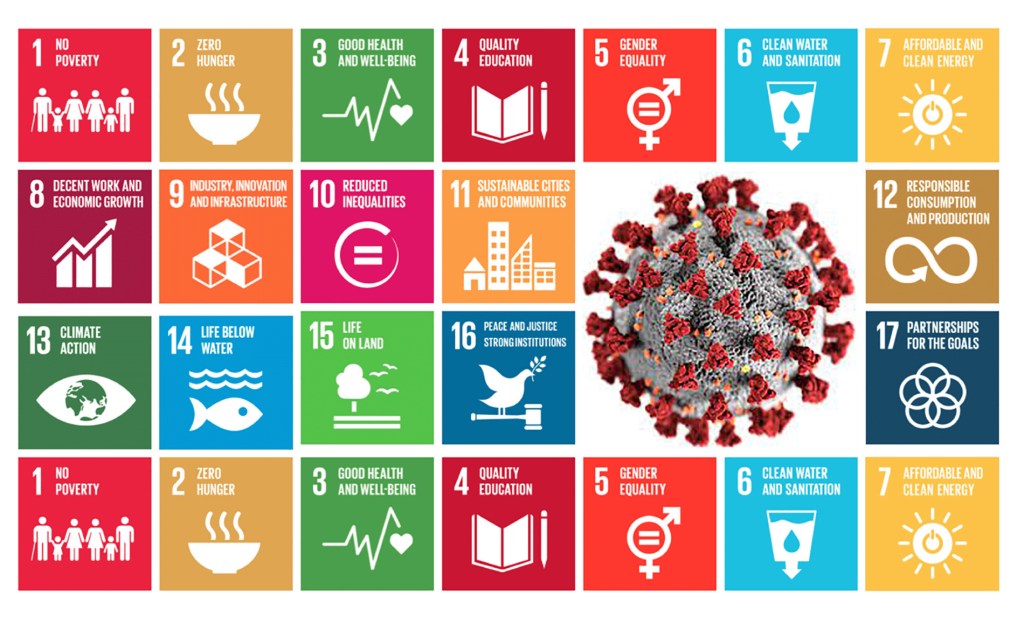Redefining Female Throwing: A Fresh Perspective – Bioengineer.org

Report on “Throwing Like a Girl”: A Framework for Advancing Sustainable Development Goals in Athletics
Introduction: Aligning Athletic Research with Global Goals
A 2025 article by Anne Fausto-Sterling, “Throwing Like a Girl: A Critique of Past Approaches and an Illustrated Proposal for a Path Forward,” provides a critical analysis of gendered physical performance. This report reframes the article’s findings through the lens of the United Nations Sustainable Development Goals (SDGs), highlighting its contributions to gender equality, quality education, and reduced inequalities.
Challenging Biases to Achieve SDG 5: Gender Equality
The research directly confronts historical and systemic biases that hinder progress toward SDG 5 (Gender Equality). It critiques the normative assumptions in sports science that perpetuate discrimination against women and girls.
- Deconstruction of Stereotypes: The work systematically dismantles the binary view of physical capability, which has historically relegated women to notions of fragility and limited their participation in sports. This aligns with SDG Target 5.1 to end all forms of discrimination against all women and girls everywhere.
- Critique of Flawed Methodologies: Fausto-Sterling exposes how traditional research methodologies have reinforced gender stereotypes rather than providing objective analysis, calling for a new standard in scientific inquiry that promotes gender equality.
- Promotion of Equal Opportunities: By challenging the foundations of gender bias in athletics, the research advocates for a culture shift that ensures women and girls have equal opportunities to participate, practice, and excel in physical activities.
An Interdisciplinary Framework for SDG 3 (Good Health and Well-being) and SDG 10 (Reduced Inequalities)
Fausto-Sterling advocates for an interdisciplinary approach that integrates biology with social sciences to create a holistic understanding of physical performance. This model supports multiple SDGs by addressing the complex interplay of physiological and social factors.
- Integration of Disciplines: The proposal calls for combining insights from biology, anthropology, sociology, and psychology.
- Fostering Well-being (SDG 3): By creating a more inclusive and less stereotypical environment in sports, the research promotes physical and mental well-being for all individuals, encouraging lifelong participation in physical activity.
- Reducing Inequalities (SDG 10): A holistic understanding of performance helps dismantle the social constructs that create and sustain inequality, fostering an environment where athletic potential is not limited by gender identity.
Advancing SDG 4 (Quality Education) Through Inclusive Practices
A central component of the proposed path forward is the implementation of educational interventions designed to foster inclusive and equitable environments, directly contributing to SDG 4 (Quality Education).
- Educational Programs: The article envisions targeted programs for young athletes, educators, and coaches to dismantle stereotypes and promote inclusivity. This supports SDG Target 4.7, which calls for education that promotes a culture of peace and gender equality.
- Innovative Teaching Tools: The call to incorporate visual illustrations in research and education serves as a tool for accessible and equitable learning, making complex biomechanical concepts understandable and countering traditional narratives that favor male performance.
- Empowering Athletes: These educational initiatives aim to empower all athletes to recognize and challenge the biases that inhibit participation and performance, fostering an equitable learning environment within sports.
Conclusion: A Call to Action for Sustainable and Equitable Sports
Anne Fausto-Sterling’s research offers a comprehensive framework for re-examining gender and physicality in sports. Its conclusions serve as a powerful call to action for researchers, policymakers, and educators to align athletic practices with the core principles of the Sustainable Development Goals. By championing an evidence-based, interdisciplinary, and educational approach, this work provides a clear path toward achieving gender equality, reducing inequalities, and ensuring quality education and well-being within the global sporting community.
Analysis of Sustainable Development Goals (SDGs) in the Article
1. Identified Sustainable Development Goals (SDGs)
- SDG 5: Gender Equality
The article’s core theme is challenging gender stereotypes and biases in physical performance and sports. It directly addresses the societal and scientific discrimination that has led to “diminished opportunities for women and girls,” advocating for a culture shift towards equity and inclusivity. This aligns perfectly with the goal of achieving gender equality and empowering all women and girls.
- SDG 4: Quality Education
The article explicitly proposes “educational interventions that promote equitable practices in sports.” It envisions programs for young athletes, educators, and coaches to dismantle stereotypes and foster inclusivity. This connects to SDG 4 by emphasizing the role of education in promoting social values like gender equality and ensuring an inclusive learning environment within the context of sports.
- SDG 10: Reduced Inequalities
By highlighting how “entrenched biases” in sports “perpetuating cycles of inequality,” the article directly addresses the theme of reducing inequalities. Its call to action aims to ensure equal opportunity and promote the social inclusion of all individuals in athletics, irrespective of gender, which is a central tenet of SDG 10.
2. Specific SDG Targets
- SDG 5: Gender Equality
- Target 5.1: End all forms of discrimination against all women and girls everywhere.
The article critiques the historical and scientific biases that have promoted a “binary view of gender” and relegated women to “notions of fragility and ineffectiveness in sports.” This is a form of discrimination that the research aims to dismantle.
- Target 5.5: Ensure women’s full and effective participation and equal opportunities for leadership at all levels of decision-making in political, economic and public life.
While focused on sports, the principle applies. The article’s goal of challenging misconceptions is to remove barriers that cause “diminished opportunities for women and girls,” thereby promoting their full and effective participation in athletics.
- Target 5.c: Adopt and strengthen sound policies and enforceable legislation for the promotion of gender equality and the empowerment of all women and girls at all levels.
The author’s advocacy for “more equitable practices and policies” in sports directly reflects this target’s aim to establish frameworks that actively promote gender equality.
- Target 5.1: End all forms of discrimination against all women and girls everywhere.
- SDG 4: Quality Education
- Target 4.5: By 2030, eliminate gender disparities in education and ensure equal access to all levels of education and vocational training.
The proposed “programs targeting young athletes, educators, and coaches” are designed to eliminate gender disparities within the educational sphere of sports training and physical education.
- Target 4.7: By 2030, ensure that all learners acquire the knowledge and skills needed to promote sustainable development, including, among others, through education for… gender equality.
The educational interventions described in the article are specifically aimed at teaching inclusivity and the “fluidity of gender expression,” which directly contributes to providing learners with the knowledge and values needed to promote gender equality.
- Target 4.5: By 2030, eliminate gender disparities in education and ensure equal access to all levels of education and vocational training.
- SDG 10: Reduced Inequalities
- Target 10.2: By 2030, empower and promote the social, economic and political inclusion of all, irrespective of age, sex, disability, race, ethnicity, origin, religion or economic or other status.
The article’s call to create “an environment where every athlete can thrive regardless of gender” is a direct call for the social inclusion of all individuals in the public life of sports.
- Target 10.3: Ensure equal opportunity and reduce inequalities of outcome, including by eliminating discriminatory… practices.
The entire critique of past research methodologies and societal stereotypes is aimed at eliminating discriminatory practices that have led to unequal outcomes and opportunities for athletes based on gender.
- Target 10.2: By 2030, empower and promote the social, economic and political inclusion of all, irrespective of age, sex, disability, race, ethnicity, origin, religion or economic or other status.
3. Mentioned or Implied Indicators
The article does not mention official SDG indicators but implies several ways to measure progress towards the identified targets:
- For SDG 5 (Gender Equality):
- Adoption of Equitable Policies: The call for “more equitable practices and policies” implies an indicator related to the number of sports organizations and educational institutions that adopt and implement policies promoting gender equity.
- Participation Rates: The concern over “diminished opportunities for women and girls” suggests that tracking and comparing the participation rates of different genders in various sports would be a key indicator of progress towards equality.
- For SDG 4 (Quality Education):
- Implementation of Educational Programs: The proposal for “educational interventions” implies a direct indicator: the number of schools, clubs, and coaching programs that implement training on gender inclusivity and dismantling stereotypes.
- For SDG 10 (Reduced Inequalities):
- Reduction in Gender-Based Disparities in Sports: The goal of breaking “cycles of inequality” implies measuring the gap in resources, media coverage, and professional opportunities available to athletes of different genders.
- Perception of Inclusivity: The aim to foster an inclusive environment suggests that progress could be measured through surveys assessing athletes’ perceptions of fairness, belonging, and equal opportunity within their sports.
Summary Table of SDGs, Targets, and Indicators
| SDGs | Targets | Indicators (Implied from the Article) |
|---|---|---|
| SDG 5: Gender Equality |
|
|
| SDG 4: Quality Education |
|
|
| SDG 10: Reduced Inequalities |
|
|
Source: bioengineer.org
What is Your Reaction?
 Like
0
Like
0
 Dislike
0
Dislike
0
 Love
0
Love
0
 Funny
0
Funny
0
 Angry
0
Angry
0
 Sad
0
Sad
0
 Wow
0
Wow
0



















































.jpg.webp?itok=0ZsAnae9#)

























